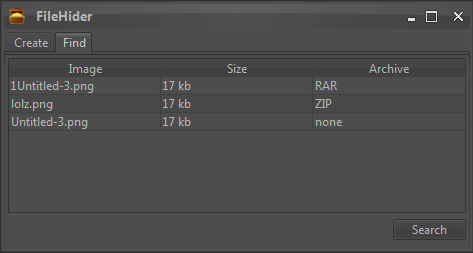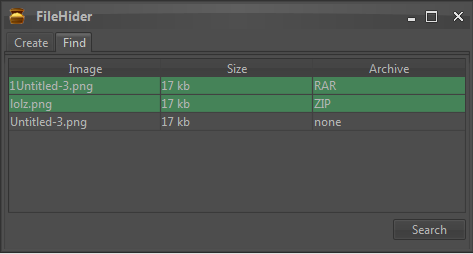2009-okt-11 15:12:05 hidefiles.Main jTable1MouseClicked
ALLVARLIG: null
java.io.StreamCorruptedException: invalid stream header: 89504E47
at java.i

bjectInputStream.readStreamHeader(ObjectInputStream.java:783)
at java.i

bjectInputStream.<init>(ObjectInputStream.java:280)
at hidefiles.Main.jTable1MouseClicked(Main.java:638)
at hidefiles.Main.access$1000(Main.java:39)
at hidefiles.Main$9.mouseClicked(Main.java:397)
at java.awt.AWTEventMulticaster.mouseClicked(AWTEventMulticaster.java:253)
at java.awt.Component.processMouseEvent(Component.java:6219)
at javax.swing.JComponent.processMouseEvent(JComponent.java:3265)
at java.awt.Component.processEvent(Component.java:5981)
at java.awt.Container.processEvent(Container.java:2041)
at java.awt.Component.dispatchEventImpl(Component.java:4583)
at java.awt.Container.dispatchEventImpl(Container.java:2099)
at java.awt.Component.dispatchEvent(Component.java:4413)
at java.awt.LightweightDispatcher.retargetMouseEvent(Container.java:4556)
at java.awt.LightweightDispatcher.processMouseEvent(Container.java:4229)
at java.awt.LightweightDispatcher.dispatchEvent(Container.java:4150)
at java.awt.Container.dispatchEventImpl(Container.java:2085)
at java.awt.Window.dispatchEventImpl(Window.java:2475)
at java.awt.Component.dispatchEvent(Component.java:4413)
at java.awt.EventQueue.dispatchEvent(EventQueue.java:599)
at java.awt.EventDispatchThread.pumpOneEventForFilters(EventDispatchThread.java:269)
at java.awt.EventDispatchThread.pumpEventsForFilter(EventDispatchThread.java:184)
at java.awt.EventDispatchThread.pumpEventsForHierarchy(EventDispatchThread.java:174)
at java.awt.EventDispatchThread.pumpEvents(EventDispatchThread.java:169)
at java.awt.EventDispatchThread.pumpEvents(EventDispatchThread.java:161)
at java.awt.EventDispatchThread.run(EventDispatchThread.java:122)
Exception in thread "AWT-EventQueue-0" java.lang.NullPointerException
at hidefiles.Main.jTable1MouseClicked(Main.java:645)
at hidefiles.Main.access$1000(Main.java:39)
at hidefiles.Main$9.mouseClicked(Main.java:397)
at java.awt.AWTEventMulticaster.mouseClicked(AWTEventMulticaster.java:253)
at java.awt.Component.processMouseEvent(Component.java:6219)
at javax.swing.JComponent.processMouseEvent(JComponent.java:3265)
at java.awt.Component.processEvent(Component.java:5981)
at java.awt.Container.processEvent(Container.java:2041)
at java.awt.Component.dispatchEventImpl(Component.java:4583)
at java.awt.Container.dispatchEventImpl(Container.java:2099)
at java.awt.Component.dispatchEvent(Component.java:4413)
at java.awt.LightweightDispatcher.retargetMouseEvent(Container.java:4556)
at java.awt.LightweightDispatcher.processMouseEvent(Container.java:4229)
at java.awt.LightweightDispatcher.dispatchEvent(Container.java:4150)
at java.awt.Container.dispatchEventImpl(Container.java:2085)
at java.awt.Window.dispatchEventImpl(Window.java:2475)
at java.awt.Component.dispatchEvent(Component.java:4413)
at java.awt.EventQueue.dispatchEvent(EventQueue.java:599)
at java.awt.EventDispatchThread.pumpOneEventForFilters(EventDispatchThread.java:269)
at java.awt.EventDispatchThread.pumpEventsForFilter(EventDispatchThread.java:184)
at java.awt.EventDispatchThread.pumpEventsForHierarchy(EventDispatchThread.java:174)
at java.awt.EventDispatchThread.pumpEvents(EventDispatchThread.java:169)
at java.awt.EventDispatchThread.pumpEvents(EventDispatchThread.java:161)
at java.awt.EventDispatchThread.run(EventDispatchThread.java:122)


